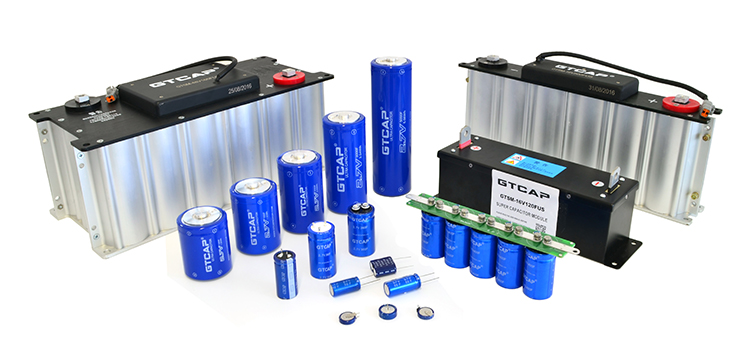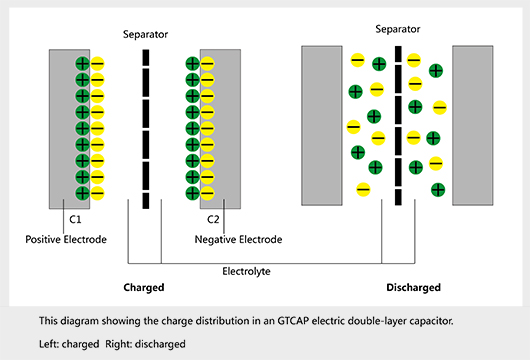What is an ultracapacitor/ super capacitor?
An ultracapacitor (also called supercapacitor, electric double-layer capacitor) differs from an ordinary capacitor in two important ways: its plates effectively have a much bigger area and the distance between them is much smaller, because the separator between them works in a different way to a conventional dielectric.The plates are made from metal coated with a porous substance such as powdery, activated charcoal, which effectively gives them a bigger area for storing much more charge.
Electricity is a hugely versatile form energy, but it suffers one big drawback: it's relatively difficult to store in a hurry. Primary Energy Sources like internal combustion engines, fuel ceels and batteries work as a continuous source of low power. However, they can not efficiently handle peak power demands or recapture energy in today’s applications because they discharge and recharge slowly.
How to charge an ultracapacitor?
Ulracapacitors deliver quick bursts of energy during peak power demands, then quickly store energy and capture excess power that is otherwise lost. They efficiently complement a primary energy source in today's applications because they discharge and recharge quickly.
Batteries can hold large amounts of power, but they take hours to charge up. Capacitors, on the other hand, charge almost instantly but store only tiny amounts of power.
In our electric-powered future, when we need to store and release large amounts of electricity very quickly, it's quite likelyturn to supercapacitors (also known as ultracapacitors) that combine the best of both worlds.
What are the ultracapacitors advantage and disadvantage compared with batteries.
SUPER CAPACITORS have many advantages over batteries: they weigh less, generally don't contain harmful chemicals or toxic metals, and they can be charged and discharged zillions of times without ever wearing out.
But they have a big drawback too: kilo for kilo, their basic design prevents them from storing anything like the same amount of electrical energy as batteries.
How do they store electricity power?
Batteries and capacitors do a similar job—storing electricity—but in completely different ways. Batteries have two electrical terminals (electrodes) separated by a chemical substance called an electrolyte. When you switch on the power, chemical reactions happen involving both the electrodes and the electrolyte. These reactions convert the chemicals inside the battery into other substances, releasing electrical energy as they go. Once the chemicals have all been depleted, the reactions stop and the battery is flat. In a rechargeable battery, such as a lithium-ion power pack used in a laptop computer or MP3 player, the reactions can happily run in either direction—so you can usually charge and discharge hundreds of times before the battery needs replacing.
EDLCs use static electricity (electrostatics) rather than chemistry to store energy. Inside a capacitor, there are two conducting metal plates with an insulating material called a dielectric in between them—it's a dielectric sandwich. Positive and negative electrical charges build up on the plates and the separation between them, which prevents them coming into contact, is what stores the energy. The dielectric allows a capacitor of a certain size to store more charge at the same voltage, so you could say it makes the capacitor more efficient as a charge-storing device.
More information: www.greentechee.com




















